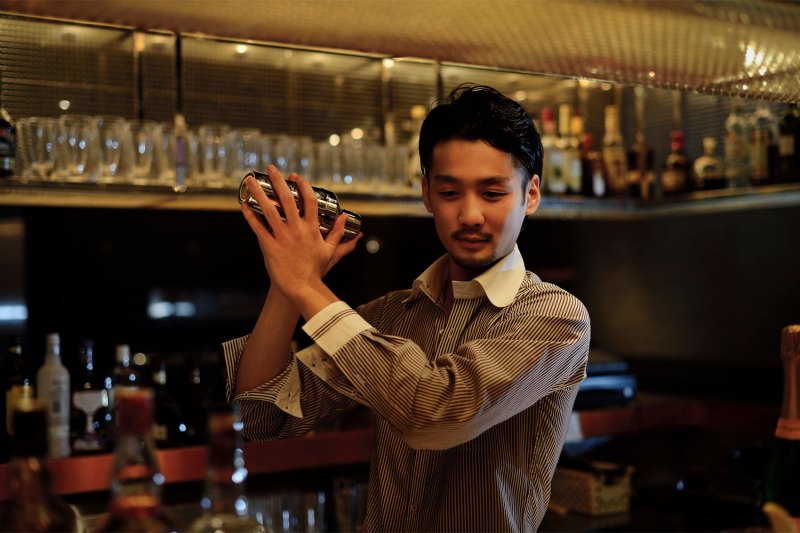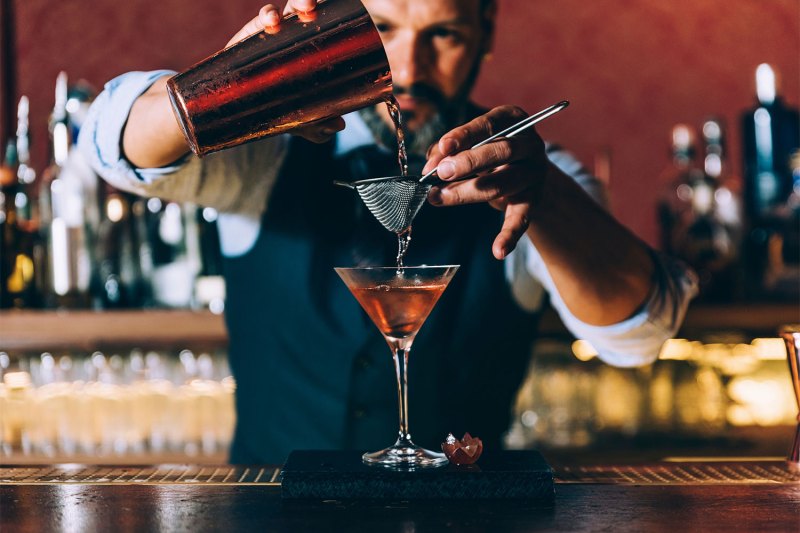The (unquestionably wise) stay-at-home orders put in place through the United States affect a wide swath of industries, but perhaps none so dramatically and immediately as the bar and restaurant business. Now lacking the ability to serve guests within their brick-and-mortar establishments, chefs and beverage directors find themselves shifting focus and seeking out ways to share their products and skills with the public, leading to a drastic rise in delivery and take-out for dishes and cocktails alike.
In most American markets, this notion of to-go alcoholic drinks is a very recent development, and plenty of cities and regions have relaxed their legal policies to accommodate this new frontier. But from the viewpoint of those behind the stick, how has the switch to take-out libations affected their approach to their craft? What are the pros and cons of this service format, and what new skills must bartenders now develop to keep business brisk and their drinks top-notch? We spoke with a group of professionals now navigating this barely charted terrain, and here’s what they had to say about the state of bartending during the Age of Quarantine.
To-go cocktails allow bartenders to maintain relationships with their client bases while keeping their skills sharp and their creativity engaged.
A massive number of hospitality workers must now contend with layoffs and furloughs related to restaurant closures. However, the to-go cocktail movement allows a certain number of beverage pros to remain employed and to continue sharing their libations with local drinkers. “The most positive part of offering a to-go menu, for me, is the opportunity to still go to work! Even though it is for FAR less hours than usual, I am thankful to be able to still get behind the bar, flex my drink-making muscles, and spend a couple hours chopping it up with a colleague,” explains bartender Nicole Karev of King Tai in Brooklyn.

While the lack of customers in the bar does lower the space’s energy and makes bartenders long for direct guest interaction, beverage director Gina Buck of Concord Hill in Brooklyn points out that the to-go cocktail model allows for a slower pace and more detailed attention on each beverage. “I’m really enjoying the focus I can have on each order. The only distractions are if the phone rings or if Chef needs something from the kitchen. It’s quite nice being able to run this show behind the bar alone, [without] having dozens of other tasks like clearing plates, or anyone else moving things around in my station. I enjoy working alone, knowing everything has a place and no one dirties things up, or doesn’t put something back where they found it … I’m a bit OCD about my work station in that way. I like things clean and in the right place,” Buck tells us.
Some bartenders focus on developing new cocktails designed to travel well, while others find ways of packaging their “greatest hits” for takeout.
Bars that choose to remain open for to-go service have a few different options for selling alcoholic beverages; some bartenders elect to create entirely new cocktails specifically suited to this form of distribution, and others prefer to adapt their existing top sellers.
According to beverage director Stephanie Reading of Birdie G’s in Santa Monica, CA, “coming up with a to-go cocktail menu can be a little challenging. You want to have cocktails that are easy to enjoy at home with minimal work, with ingredients that have a good shelf life and without compromising originality. When thinking of what drinks to offer, I wanted to find a way for people to be able to re-create the experience they would have had, had they come in and sat at my bar as closely as possible, but in the comfort of their living room. It’s challenging because you don’t know what tools your customers will have at home, or what experience they have when it comes to cocktail building, so you need cocktails that don’t take a lot of technique, but are still exciting and delicious.” A few specific batched cocktails sold by Birdie G’s include Mum’s An Old Fashioned Gal (a twist on an Old Fashioned with chrysanthemum and Sazerac Rye), The Golden Rule (lemon, agave, Opuntia prickly pear brandy, tequila, marigold oil) and Sky’s the Limit (a twist on an Aviation with maraschino, violette, dry vermouth, lavender bitters, Aviation American gin and a lemon twist).

Certain bartenders, like beverage director James Simpson of Espita in Washington, D.C., offer both tried-and-true staples and brand-new creations on their takeout menus. In Simpson’s case, “the to-go cocktails have been a great challenge and prompted us to rethink what is possible. Questions like: Can we deliver a carbonated cocktail? What about a cocktail with egg whites? Ice cold martinis and margaritas? all kept me up at night. And the great thing is that we’ve figured them out and built them into this menu. The same quality technique and ingredient-driven cocktails are [now] able to travel home with you and look like I passed them right over the bar, and I get to see the results on Instagram!” In order to make his cocktails as transportable as possible, “[our thought process is] all about how the cocktails are going to be consumed, and [how to] minimize the work on the guest’s end. [For example,] our Gin Rhubarb Sour [requires] a sous-vide bath, juicer, milk-bag, and soy protein treatment, which are all extremely labor-intensive, [but we do it] all so you can shake up the bottle and create a Gin Fizz in your home in about 15 seconds.”
In the interest of producing a higher product volume of cocktails with consistent flavor profiles, businesses like Il Posto in Denver, CO are fully embracing the recent trend of canned cocktails; lead bartender Antonio Lima says that “we had planned on developing a kegged/canned cocktail program to head into the spring/summer even before the coronavirus hit. From a service perspective, it is a no brainer (not to mention, they’re fun to create!). None of the cocktails we’re canning have previously been featured on the menu, and we’re constantly rotating our offerings based on preservation of perishables and what we can get our hands on.”
“Cocktail kits” offer customers a fresh, DIY approach to their favorite drinks (and also allow bartenders to make sales without violating strict statewide liquor laws).
If you like the idea of making your own á la minute cocktail using ingredients provided by expert mixologists (or if you live in an area that prohibits the sale of pre-mixed to-go alcoholic beverages), then the “cocktail kit” model — currently found at bars and restaurants all over the country — may be a perfect fit for you.
Craft distilleries especially appreciate the “cocktail kit” form of service because it allows them to focus on developing mixers that pair well with their house spirits and on providing guests with the opportunity to connect directly with the ingredients. Tasting room manager Jacob Cantu of West Fork Whiskey Co. in Indianapolis builds “Quarantine Elixir Mixers,” or 12 oz. containers of made-to-order liquids meant to blend seamlessly with West Fork’s whiskeys. “It really comes down to versatility and giving consumers quality cocktails at an affordable price. Our regulars usually have multiple bottles of our whiskey at home; they were only missing the cocktail ingredients. Those new to our brand can grab a bottle of whiskey with their elixir, and then they’re off running. Finally, while we think the mixers work best with our whiskey, even customers who consistently drink different brands can grab an elixir. They can just mix with what they have and create a quality cocktail. It’s all about offering a great at-home option for people isolating themselves during these trying times,” says Cantu of his Elixir Mixer project.
Beverage director Matt Bagnola of Ina Mae Tavern and Packaged Goods in Chicago sells his take-out libations in cocktail kit form because, “I believe that the cocktail kits have an added value because of the hands-on element of being able to make the cocktail [yourself]. Instead of selling premade cocktails, the guests get to interact with ours. Stirring or shaking a cocktail at home always makes it taste better.” He focuses on seasonality and ease when selecting the kit drinks: “Our to-go cocktail menu is a combo of Ina Mae Tavern guest favorites, like the Hurricane and the Jean Lafitte [whiskey, almond orgeat, pineapple, lemon, bitters] and new offerings like the Daydreams of Years Past [tequila, blackberry shrub, pineapple lime] and the Paloma. Both the Paloma and Daydreams of Years Past were developed for our spring/summer menu, and we thought they were a perfect addition to our to-go cocktail menu, with the weather slowly starting to turn in Chicago. We wanted the
Takeout service requires bartenders to develop and hone new skills.
Veteran bartenders have their in-person mixology skills down to a science … but transferring their know-how to this brave new world of to-go cocktails presents new and intriguing challenges. “There are definitely steps I’ve taken to not only get through this tough time, but to also adapt to a ‘new normal’ [for this industry]. Being able to experiment and create [cocktails] at home wasn’t always a necessity, but now that most bartenders don’t have access to the ‘lab’ at work, it’s time to get inventive. I’ve taken advantage of everyday items I have around the house in order to keep coming up with new and stylish cocktails. You’d be surprised what you can do with a few pantry ingredients!” Don Papa Rum brand ambassador and beverage director Peter Ruppert of Short Stories in New York City tells The Manual of his adjustment period.
Gina Buck also feels that she’s needed to devise new methods of handling different responsibilities and tackling tricky and unprecedented situations: “Maintaining composure during the stressful days and busiest hours feels very different than it did before. Constantly changing my gloves in between every task, trying to speak clearly through my mask over the phone, balancing the calls, customers, and delivery drivers walking up to the window, making orders, helping in the kitchen, and getting used to the new flow of ‘glassware’ and mise en place is a totally new ball game. But, this is day 30, and I feel pretty proud to say that we’ve made it this far already.”
Editors' Recommendations
- A major change is coming to In-N-Out, and people have feelings
- How to Make the Best Hurricane Cocktail this Summer
- How to Make the Controversial Singapore Sling Cocktail
- How to Make Boxed Mac and Cheese Better
- What Is Ultrasonic Homogenizing and What Does It Have to Do With Cocktails?


